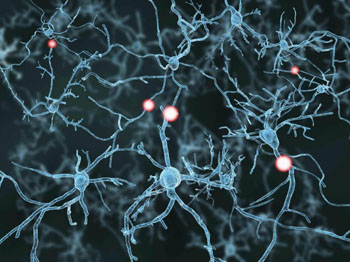New Therapies for Parkinson’s Disease More Effective at Early Stages of Diagnosis
By LabMedica International staff writers
Posted on 07 Jun 2016
Experts discussed a wide range of new insights into the early stages of Parkinson’s disease and potential early diagnostic approaches at the 2nd Congress of the European Academy of Neurology in Copenhagen, Denmark (May 28-31, 2016).Posted on 07 Jun 2016
“New, neuroprotective or disease-modifying therapies against Parkinson’s could be far more effective if administered at an early stage of the disease. Fortunately, we are increasingly able to decipher the mechanisms by which the condition develops thanks to the latest findings and methods, which enables us to identify persons at risk of developing Parkinson’s early on,” commented Prof Günther Deuschl of the University Medical Center Schleswig-Holstein in Kiel, and President of the European Academy of Neurology (EAN; Vienna, Austria).

Image: New research suggests that therapies for Parkinson’s disease could be more effective if administered at the early stages of the disease (Photo courtesy of McGill University).
More and more studies have shown that many symptoms appear several years prior to the identifiable degeneration of nerve cells and the onset of typical motor impairment. These include hyposmia, constipation, dizziness, and urinary dysfunction. REM-sleep behavior disorder is another such symptom. In healthy individuals, motor functions are inhibited during this phase of sleep, but sufferers of this condition actually physically enact their dreams.
“A long line of studies being presented at the EAN Congress confirm the existence of risk markers that are not necessarily associated with Parkinson’s disease at first glance, and as such are easily missed,” said Prof Deuschl. One of these studies, an analysis of 40 Parkinson’s patients compiled by French researchers, shows that the respiratory function of those with the disease is significantly weaker than that of healthy individuals. It appears that in early stages of Parkinson’s, the function of muscles involved in breathing is impaired.
An Italian study presented Congress examined olfactory performance of Parkinson’s patients at an early, undiagnosed stage. The healthy control group’s stronger sense of smell may be the result of a better cortical connection to the caudate nucleus, a part of the basal ganglia involved in controlling voluntary movements. Researchers from Russia studied 104 patients and illustrated the prevalence of olfactory dysfunction among Parkinson's sufferers. Eight of10 participants had hyposmia, almost 1 in 5 were anosmic, and only 2 subjects had no impairment.
Risk markers are another area where researchers have gained new insights. It appears that agglutination of the protein alpha-synuclein plays a decisive part in disease progression. There is increasing evidence that pathological changes occur not only in the brain, but also in other nerve cells, for instance in the intestines, and that they possibly “migrate” from there to the brain. Typical protein damage has also been found in skin cells and the salivary glands. “Detailed research is under way to establish whether a biopsy of the nerves in the intestines, salivary glands, or skin permits a conclusive early diagnosis of the condition,” said Prof Deuschl.
The definition of criteria for diagnosing Parkinson’s in the prodromal phase (a very early stage when conventional clinical diagnosis based on motor symptoms is not possible) is a major step forward in terms of early recognition. “The criteria were recently published by the Movement Disorder Society. They are designed to standardize clinical research and provide diagnostic support,” Prof Deuschl explained, “We have developed a completely novel neurological approach that links clinical examinations and statistical calculations of probability.” The starting point is the likelihood that an individual will develop the condition, based on their age. As much diagnostic information as possible is then collected and evaluated using a likelihood ratio. The information can include environmental risks such as smoking or caffeine consumption, genetic factors, the results of biomarker tests, and prodromal symptoms such as constipation or olfactory dysfunction. This means that risk factors can be considered as either positive or negative influences. “The risk assessment system can be extended as required when new tests to support early diagnosis are developed,” said Prof Deuschl.
Sources: EAN 2016 Abstracts G. Baille et al: Ventilatory disturbance in early Parkinson’s disease: a prospective study; EAN 2016 Abstract S. Marino et al: Resting state functional connectivity in olfactory network in de novo Parkinson’s disease; EAN 2016 Abstract M. Titova et al: Objective olfactory testing and self-assessment of olfactory function in patients with Parkinson’s disease; R.B. Postuma et al: The new definition and diagnostic criteria of Parkinson's disease, in The Lancet, May 2016.
Related Links:
European Academy of Neurology













